登録情報 データベース : PDB / ID : 6zyjタイトル Crystal structure of Hsc70 ATPase domain in complex with ADP and calcium Heat shock cognate 71 kDa protein キーワード / / / / 機能・相同性 分子機能 ドメイン・相同性 構成要素
/ / / / / / / / / / / / / / / / / / / / / / / / / / / / / / / / / / / / / / / / / / / / / / / / / / / / / / / / / / / / / / / / / / / / / / / / / / / / / / / / / / / / / / / / / / / / / / / / / / / / 生物種 Homo sapiens (ヒト)手法 / / / 解像度 : 1.85 Å データ登録者 Yan, Y. / Preissler, S. / Ron, D. 資金援助 組織 認可番号 国 Wellcome Trust Wellcome 200848/Z/16/Z
ジャーナル : Elife / 年 : 2020タイトル : Calcium depletion challenges endoplasmic reticulum proteostasis by destabilising BiP-substrate complexes.著者 : Preissler, S. / Rato, C. / Yan, Y. / Perera, L.A. / Czako, A. / Ron, D. 履歴 登録 2020年8月1日 登録サイト / 処理サイト 改定 1.0 2020年12月16日 Provider / タイプ 改定 1.1 2024年1月31日 Group / Database references / Refinement descriptionカテゴリ chem_comp_atom / chem_comp_bond ... chem_comp_atom / chem_comp_bond / database_2 / pdbx_initial_refinement_model Item / _database_2.pdbx_database_accession
すべて表示 表示を減らす
 データを開く
データを開く 基本情報
基本情報 要素
要素 キーワード
キーワード 機能・相同性情報
機能・相同性情報 Homo sapiens (ヒト)
Homo sapiens (ヒト) X線回折 /
X線回折 /  シンクロトロン /
シンクロトロン /  分子置換 / 解像度: 1.85 Å
分子置換 / 解像度: 1.85 Å  データ登録者
データ登録者 英国, 1件
英国, 1件  引用
引用 ジャーナル: Elife / 年: 2020
ジャーナル: Elife / 年: 2020 構造の表示
構造の表示 Molmil
Molmil Jmol/JSmol
Jmol/JSmol ダウンロードとリンク
ダウンロードとリンク ダウンロード
ダウンロード 6zyj.cif.gz
6zyj.cif.gz PDBx/mmCIF形式
PDBx/mmCIF形式 pdb6zyj.ent.gz
pdb6zyj.ent.gz PDB形式
PDB形式 6zyj.json.gz
6zyj.json.gz PDBx/mmJSON形式
PDBx/mmJSON形式 その他のダウンロード
その他のダウンロード 6zyj_validation.pdf.gz
6zyj_validation.pdf.gz wwPDB検証レポート
wwPDB検証レポート 6zyj_full_validation.pdf.gz
6zyj_full_validation.pdf.gz 6zyj_validation.xml.gz
6zyj_validation.xml.gz 6zyj_validation.cif.gz
6zyj_validation.cif.gz https://data.pdbj.org/pub/pdb/validation_reports/zy/6zyj
https://data.pdbj.org/pub/pdb/validation_reports/zy/6zyj ftp://data.pdbj.org/pub/pdb/validation_reports/zy/6zyj
ftp://data.pdbj.org/pub/pdb/validation_reports/zy/6zyj リンク
リンク 集合体
集合体
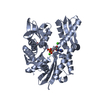
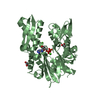
 要素
要素 Homo sapiens (ヒト) / 遺伝子: HSPA8, HSC70, HSP73, HSPA10 / 発現宿主:
Homo sapiens (ヒト) / 遺伝子: HSPA8, HSC70, HSP73, HSPA10 / 発現宿主: 
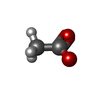








 X線回折 / 使用した結晶の数: 1
X線回折 / 使用した結晶の数: 1  試料調製
試料調製 シンクロトロン / サイト:
シンクロトロン / サイト:  Diamond
Diamond  / ビームライン: I04 / 波長: 0.97951 Å
/ ビームライン: I04 / 波長: 0.97951 Å 解析
解析 分子置換
分子置換 ムービー
ムービー コントローラー
コントローラー



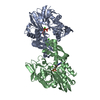
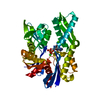
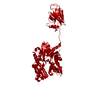
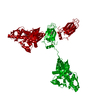
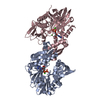
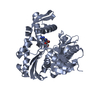
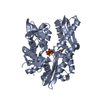
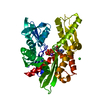

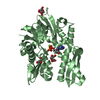


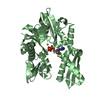

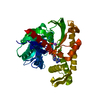

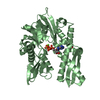


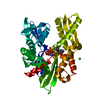
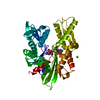
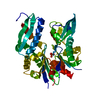


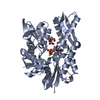
 PDBj
PDBj




















